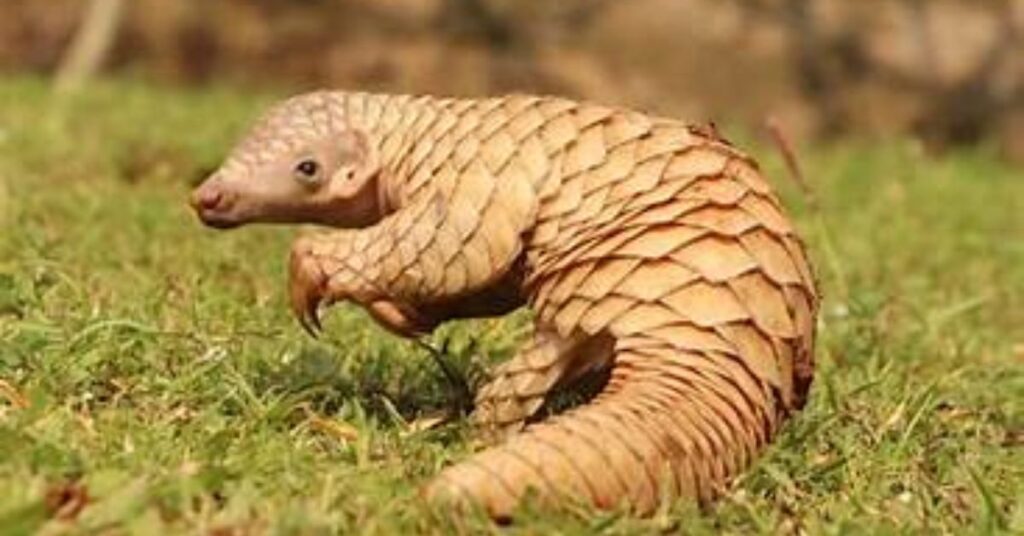Have you ever heard of the pangolin? This fascinating creature, known for its distinctive armor of scales, is one of the most unique mammals on the planet. But why is the pangolin so special, and what challenges does it face in today’s world? In this article, we will explore the biology, behavior, and conservation status of the pangolin, shedding light on why it is crucial to protect this remarkable animal.
What Is a Pangolin?
Pangolins are the only mammals wholly covered in scales, making them easily recognizable. These nocturnal creatures belong to the family Pholidota and are found primarily in Asia and Africa. There are eight species of pangolins, each with distinct characteristics and habitats. Unlike most mammals, pangolins have long tongues that can extend up to 16 inches, allowing them to feed primarily on ants and termites. Their unique adaptations have earned them the nickname “scaly anteaters.”
Anatomy and Physiology
Pangolins have a long, flexible body, covered with keratin scales that provide protection from predators. These scales are a key feature of pangolin anatomy, and their construction is similar to that of human fingernails. Their strong, curved claws enable them to dig into ant mounds and termite hills, making foraging easier. The pangolin’s lack of teeth is offset by its specialized tongue, which allows it to slurp up its favorite meals.
Pangolin Habitat and Distribution
Pangolins inhabit a variety of ecosystems, including tropical forests, savannas, and grasslands. Each of the eight species has its preferred habitat:
- African Ground Pangolin: Found in sub-Saharan Africa, these pangolins live in open woodlands and savannas.
- Asian Tree Pangolin: This species is arboreal, often residing in trees in Southeast Asia’s tropical forests.
- Giant Pangolin: The largest species, found in the rainforests of Central Africa, relies on dense vegetation for cover.
Understanding the distribution of pangolins is crucial for conservation efforts, as habitat destruction poses a significant threat to their survival.
Diet and Feeding Behavior
Pangolins are specialized insectivores, primarily consuming ants and termites. Their long tongues, which can be extended and retracted, allow them to access insects in narrow crevices. Pangolins are known to eat thousands of insects in a single day. Their diet is essential not only for their health but also for maintaining the ecological balance within their habitats, as they help control insect populations.
Feeding Techniques
Pangolins have unique feeding techniques that showcase their adaptability:
- Digging: Using their powerful claws, they can dig into anthills or termite mounds to access food.
- Licking: Their long tongues can reach deep into narrow spaces, allowing them to consume insects without much effort.
- Balling Up: When threatened, pangolins can roll into a tight ball, protecting their vulnerable underbelly and making it difficult for predators to access them.
Reproduction and Life Cycle
Pangolins exhibit a fascinating reproductive behavior. Mating usually occurs during the rainy season, and after a gestation period of around 70 to 140 days, a single offspring is born. The young pangolin is born with soft scales, which harden as it matures.
Parental Care
The mother pangolin provides care and protection for her offspring, carrying them on her back when they are young. The young pangolins will stay with their mother for several months before becoming independent. This extended period of parental care is crucial for the survival of the young, as they learn essential skills for foraging and self-defense.
Conservation Status and Threats to Pangolins
Despite their unique adaptations and ecological importance, pangolins face severe threats that have led to their classification as one of the most trafficked mammals in the world. The International Union for Conservation of Nature (IUCN) lists all eight species of pangolins as vulnerable, endangered, or critically endangered.
Illegal Wildlife Trade
One of the most significant threats to pangolins is the illegal wildlife trade. Their scales are highly sought after in traditional medicine, particularly in Asia, where they are believed to have medicinal properties. Additionally, pangulin meat is considered a delicacy in some cultures. This high demand has led to rampant poaching and trafficking, with an estimated one million pangolins being taken from the wild in the last decade alone.
Habitat Loss
Habitat destruction due to deforestation, agricultural expansion, and urbanization further exacerbates the plight of pangolins. As their natural habitats shrink, pangolins are forced into smaller areas where they face increased competition for food and mates.
Conservation Efforts
Several organizations and governments are working to protect pangolins and their habitats. Here are some key initiatives aimed at preserving these remarkable creatures:
1. Legal Protection
Many countries have implemented laws to protect pangolins from poaching and trade. For instance, pangolins are included in the Convention on International Trade in Endangered Species of Wild Fauna and Flora (CITES), which regulates international trade of endangered species.
2. Awareness Campaigns
Conservation organizations are actively raising awareness about the plight of pangolins. Public education campaigns aim to dispel myths surrounding pangolin scales and promote their importance in maintaining ecological balance.
3. Habitat Restoration
Efforts are underway to restore and protect natural habitats for pangolins. This includes reforestation initiatives and the establishment of protected areas where pangolins can thrive without the threat of habitat loss or poaching.
4. Community Involvement
Involving local communities in conservation efforts is crucial. By promoting sustainable practices and providing alternative livelihoods, organizations can reduce the reliance on illegal wildlife trade and protect pangolin populations.
How You Can Help
You can contribute to the conservation of pangolins and raise awareness about their plight. Here are some actionable steps you can take:
1. Educate Yourself and Others
Learn about pangolins and their role in the ecosystem. Share this knowledge with friends and family to raise awareness about the importance of protecting these unique mammals.
2. Support Conservation Organizations
Consider donating to or volunteering with organizations that work to protect pangolins and their habitats. Your support can help fund crucial research, awareness campaigns, and habitat restoration projects.
3. Advocate for Wildlife Protection
Get involved in advocacy efforts to strengthen laws and regulations protecting pangolins and other endangered species. Your voice can make a difference in the fight against illegal wildlife trade.
4. Make Responsible Consumer Choices
Be mindful of your consumption habits and support sustainable products. Avoid products that contribute to habitat destruction or the illegal wildlife trade.
Conclusion
Pangolins are extraordinary creatures that play a vital role in our ecosystems. However, their survival is threatened by poaching, illegal wildlife trade, and habitat loss. By raising awareness and supporting conservation efforts, we can help protect these unique mammals for future generations. Understanding the challenges they face is the first step toward ensuring a sustainable future for pangolins and the ecosystems they inhabit.







